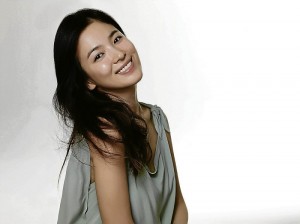 When faced with a choice between face cream and foundation (that is, skincare versus makeup), most often the typical Filipina would pick the makeup over the skincare.
When faced with a choice between face cream and foundation (that is, skincare versus makeup), most often the typical Filipina would pick the makeup over the skincare.
Yet, the Philippines has been a unique and interesting market for Laneige, a prestige Korean beauty brand best known for skincare.
In most of Laneige’s markets including the United States, France, China, South Korea and the rest of Asia, its skincare line that touts well-hydrated skin has consistently been the top draw, with makeup only a secondary offering.
“It seems we Filipinos prefer to cover up our skin imperfections instead of tackling them at the root,” which is what Korean women are known for, says Judy Yu, vice president of Laneige Philippines.
In both its print ads and TVCs, Laneige highlights the dewy skin of popular Korean actress Song Hye Gyo, fresh and barefaced, underscoring Korean women’s preference for a more natural look that uses very little or no makeup.
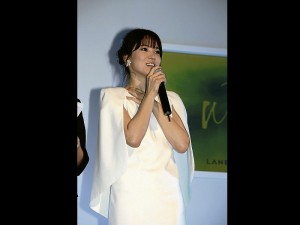 Where the light hits the contours of 29-year-old Song’s pretty face, there is a glow, a natural sheen that’s a no-no for most Filipinas who favor a matte, shine-free look.
Where the light hits the contours of 29-year-old Song’s pretty face, there is a glow, a natural sheen that’s a no-no for most Filipinas who favor a matte, shine-free look.
“Filipinas are less shy about wearing makeup, that’s why we’re selling more makeup here than in other markets. The Koreans find that curious and interesting,” Yu says. “But I think we’re learning.” The brand is on its second year in the Philippines.
Pop culture
In the last five years, there has been an influx of Korean cosmetics in the country, not surprisingly brought about by the Korean wave or hallyu, the global spread of South Korean pop culture.
Spurred by this trend, a young businesswoman named Winnie Go approached Yu and her husband with the prospect of a partnership to bring in another Korean beauty brand. The Yus have a long business relationship with South Korea, being the local distributor here of a Korean brand of elevators. Meanwhile, Go had the retail connection; she’s married to Frederick Go, president and chief operating officer of Robinsons Land Corp.
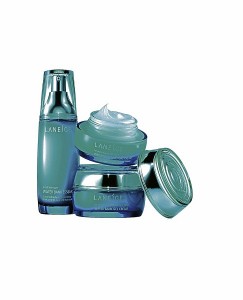 Their Korean counterparts suggested the Yus go for a prestige brand, which fits better with their high-end business profile—ergo, Laneige.
Their Korean counterparts suggested the Yus go for a prestige brand, which fits better with their high-end business profile—ergo, Laneige.
Laneige (from the French la neige, meaning snow, pronounced lah nehz) is a banner brand of AmorePacific, South Korea’s largest cosmetics firm. The brand was conceived in 1994 with a focus on healthy, youthful skin via optimal hydration.
It targeted women in their 20s, which the brand believes is the crucial stage when women should seriously think about skin hydration to prevent lines and wrinkles.
The range has grown to include makeup and men’s skincare.
AmorePacific is run by Suh Kyung Bae, one of Korea’s wealthiest men and a third-generation cosmetics maker. Suh’s grandmother began the trade in North Korea by making camellia-based creams and hair oils, a craft she taught her son, Suh Sung Whan, Suh’s father. She called her business simply “Prosperous Store,” later renamed by her son, in 1945, as Pacific Chemical Industry, with the hopes of expanding overseas after the war. The family moved to Seoul in 1948.
The younger Suh, 48, is a Cornell MBA who was born next door to the company’s headquarters.
By the 1980s, the company had grown so big and over-diversified. It suffered a blow when, in the 1990s, the South Korean government lifted tariffs on imports, and American and European cosmetics had flooded the market. The company nearly went bust.
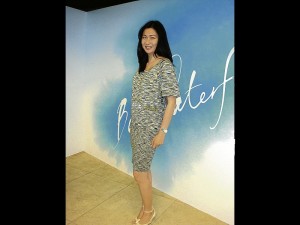 In 1997, the company aimed to conquer overseas markets. Its initial foray in France had failed, but it refocused on selling fragrances; 94 percent of the French population wore perfumes. It launched Lolita Lempicka in 1997. By this time, the company had been renamed AmorePacific.
In 1997, the company aimed to conquer overseas markets. Its initial foray in France had failed, but it refocused on selling fragrances; 94 percent of the French population wore perfumes. It launched Lolita Lempicka in 1997. By this time, the company had been renamed AmorePacific.
Today, it sells to Bergdorf Goodman and Neiman Marcus in the US, focusing mainly on the high-luxury market, highlighting the Sulwhasoo brand to go against western luxury brands that sell $400 tubs of face cream. Sulwhasoo, which uses red ginseng as its main selling point, is in a similar price range.
Exotic ingredients
The west is mystified by the beauty culture of the Orient, not least of all its exotic ingredients—ginseng, green tea, rice, bamboo sap. (The company introduced green tea, which it farms, in its products in the 1990s.)
AmorePacific is banking on this fascination in its bid for the global market. Today, global sales account for over 14 percent of AmorePacific’s $2 billion revenues; it aims to double that by 2015. A boost to the company ego: It was ranked Top 20 in Women’s Wear Daily’s Beauty Biz Top 100, a global ranking that’s based on sales.
Yu says customers who are unfamiliar with Laneige are drawn to their stores in TriNoma, SM Mall of Asia and Robinsons Place Midtown Mall (it just opened a new shop in Shangri-La Mall) upon seeing Song Hye Gyo’s posters on the shops’ walls. “People are posing next to the posters,” she says, amused.
At the recent relaunch of the Laneige Water Bank line in Seoul, even jaded journalists got star-struck with the petite spokesperson, who came by briefly to answer a few canned beauty questions.
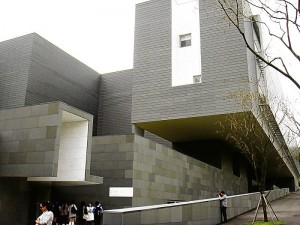 The Asian media was also given a tour of Mizium, AmorePacific’s sprawling $50-million R&D center outside Seoul, its second in Korea (it also has R&D centers in Japan, France and China). The state-of-the-art facility opened only in September, and has 350 researchers, 14 percent of whom are Ph.Ds. AmorePacific has 415 patents in its name.
The Asian media was also given a tour of Mizium, AmorePacific’s sprawling $50-million R&D center outside Seoul, its second in Korea (it also has R&D centers in Japan, France and China). The state-of-the-art facility opened only in September, and has 350 researchers, 14 percent of whom are Ph.Ds. AmorePacific has 415 patents in its name.
Laneige introduced its “Water Science” in 1995, believing that skin’s proper hydration when a woman is still in her 20s delays skin aging. From its so-called Germanium Mineral Water in 1995, the formula has been continuously improved through the years to introduce the Nano Mineral Water, Ceramide Water, Ionized Mineral Water from Himalayan snow, and finally, Optimal Mineral Water and its Water Pump System.
While the major target of Laneige are women in their 20s and 30s, it has found a following in older women, even in the Philippines, according to Yu.
Dr. Shim Beom cited his sister-in-law who’s in her late 40s and lives in Los Angeles, near the desert. “I’ve tried giving her other creams, but she has found that Laneige moisturizes quite effectively.”
Does that mean women can compensate for their age by using more than the recommended amount of product? According to the AmorePacific scientists, “You can adjust cosmetic usage according to your skin type. The only problem if you use too much is that your skin may not absorb as much.” Beom is quick to clarify that the Water Bank line is more a preventive measure. For more mature skin, the Perfect Renew range is suggested.
Across all markets, the consistent bestseller is the Water Sleeping Pack EX, a cool, nonsticky gel that hydrates and exfoliates skin as one sleeps. Most of Water Bank’s range is in similar gel or cream-gel formulation that’s light, cool, and favorable in humid climates.
Encouraged by Laneige’s success in the Philippines, CEO Suh Kyung Bae had paid the country a visit to assess his other brands’ prospects in the country. It seemed that he liked what he saw, because Suh expressed his wish to see the luxury range Sulwhasoo in the country soon.
“We’re weighing our options,” Yu says carefully. “First, we have to find a retail space. Unlike in Seoul where all the prestige brands are placed together in a department store floor, here you have to have your own shop. That’s always a challenge.”









































